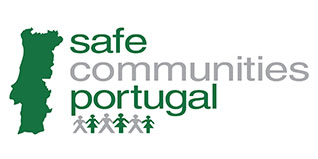Federation asks for more time to clean forest land
Lisbon, April 27, 2024 (Lusa) – Owners must clear agricultural and forest land by April 30, to prevent rural fires, but adverse weather and lack of labour lead the federation of forest owners associations to ask for the extension of the deadline.
“The feeling is always the same, that there cannot always be a date for this period, because nature is in charge. This year as it rained a lot, until late, […] the land is still all covered in water. If the grass is cut now, the fine materials, which are the ones that spread fires, will still all burst”, stated the president of the board of the National Federation of Forest Owners Associations (FNAPF).
Luís Damas noted that the deadline of the 30th of this month to complete fuel management “is not feasible” and, therefore, defended “the postponement until the end of May or until the 15th of June”, since, in addition because it rained a lot, “there is no labor”.
“We run the risk of doing things without having any use afterwards. [There are] herbs at birth and then when the heat of July and August arrives, everything will dry out, and there will be a lot of combustible material left to fuel the fires”, he stressed.
The federation will, therefore, try with the ministries of Internal Administration and Agriculture, which is once again responsible for Forestry, to have “some common sense” and see that “the date is impractical this year”, as happened during the pandemic of covid-19.
In any case, he admitted that, also due to pressure from the authorities, it has been proven that “these bands reduced the intensity and sometimes even changed the direction of the fire”.
“It’s a big cost every year and sometimes there isn’t the manpower to do it, but a lot of people have already internalized this because, when the GNR returns, people also get fines and they aren’t that small”, said Luís Damas.
For the president of the board of directors of ANEFA – National Association of Forestry, Agricultural and Environmental Companies, Pedro Serra Ramos, the management of fuel lanes “is feasible”, even as it seems to him that “there is less demand for cleaning services this year”.
“I think people are starting to not have the financial capacity to carry out the cleaning every year,” he noted.
The forester recognized that the owner with financial possibilities and who “knows that he will have to clean up worries about it and hires to do it very early”.
With the recent rain, he said, there are “areas with some vegetation that could raise concerns”, but even so, “if the cleaning has been done well, there won’t be much of a risk”.
For his part, Luís Damas highlighted that several associations of forest producers have “teams of sappers who do this work” and every year they feel that there is “a ritual for people” to resort to services, “both from sappers and companies specializing in cleaning” of these lands, following the tragic deaths in the 2017 fires.
In addition to cleaning 100 meters around clusters and 50 meters around houses, the FNAPF leader highlighted that “the land occupation is being changed, removing pine and eucalyptus forests and putting in other crops, which are not as combustible. , mainly for agricultural use, both vineyards and olive groves, strawberry trees”.
“Therefore, also create a security belt around the villages, with different occupation, which also forces people every year to have their vineyards and olive groves treated and also provides security for the villages”, he pointed out, ensuring that “It’s a path we’re taking.”
For now, Luís Damas, in addition to the Condomínio de Aldeia program – which supports actions to change land use and occupation and fuel management around settlements, financed by the Environmental Fund – highlighted the creation of integrated landscape management areas (AIGP), articulating landscape planning and management with the increase in forest area managed on a scale that promotes resilience to fires and the rural economy.
“Due to abandonment, the forest area in this territory has to be reduced and it has to be interspersed with such goats, such olive groves, other land uses, so that there are no continuous patches”, advocated the leader of the FNAPF, which brings together 41 organizations of forest owners and producers on the continent.
In response to Lusa, AGIF – Agency for the Integrated Management of Rural Fires explained that regional information (by municipalities and parishes) on the evolution of fuel management will be provided by municipalities and private individuals, from this year onwards, via the Platform Interoperable (Plis), meaning that this “compiled and aggregated” data will only exist from 2025 onwards.
